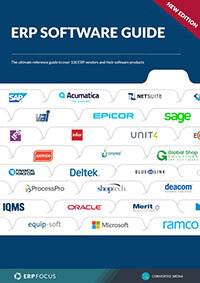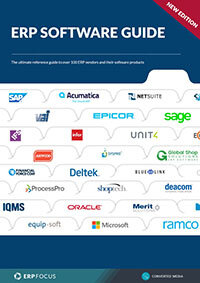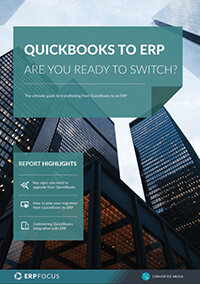5 signs you need to upgrade your ERP this year
ERP systems help a business organize their data, become more sustainable, and foster general growth within an organization. Technology is continually evolving and for optimal efficiency it is necessary to upgrade your ERP system in a timely manner. By using an outdated system you are risking business productivity, IT security, and overall customer satisfaction. A modern ERP System can help ease company operations and create greater efficiency. It is key that you understand the following signs and upgrade your ERP system when you notice red flags.
1. Your ERP System Is Not Cloud Based
With on-premise ERP systems data and document storage occurs on a local server. If the local server encounters an error and stops working for any reason, there is a chance that some of the information hosted on the server will be lost. Cloud-based ERP systems ensure that data is safe and is routinely backed up. Other benefits include improved availability and disaster recovery, improved usability, and increased mobility. A notable feature of a cloud based ERP system is that it has rapid updates and upgrades, which can ensure your software stays up-to-date at all times.
Recommended Reading: ERP Software Guide - Compare your current software with others on the market
2. Your ERP System Lacks Overall Integration
If your ERP system doesn’t seamlessly integrate with other systems such as CRM or accounting you should consider an upgrade. When your ERP doesn’t effectively communicate with other systems it creates dual data entry processes and a disconnect in an otherwise effective work flow. In addition to integratable systems you also want your ERP software to cooperate with current browsers, platforms, and modern protocols. This will help the user and will also improve customer experience.
3. The System Has Reached End-of-Life (EOL)
End-of-life or end-of-support means that the software has reached the end of its useful life and that updates and patches will no longer be released for the product. Initially you won’t be able to notice a change when EOL has been reached; it will keep working in the same way for a short time, but will face problems further down the line.
EOL may occur because developers have turned their sights towards modern software initiatives. This poses a problem because the legacy software won’t update to respond to security threats, and the ERP vendor won’t be developing patches and hot fixes that allow it to run its best.
The final issue with EOL software is that if you have a problem with the software the developer can no longer assist you. Sticking with an EOL ERP software can cause your business an extreme headache in the future. Once it is at a point where it’s broken, you’ll be left scrambling trying to find a fast fix. Take the time to research new ERP solutions that incorporate everything you need and allow you to allot the money needed to upgrade your ERP ahead of time.
4. Your Software Lacks Features That Are Becoming Industry Standard
It is easy to fall into a rut and continue using ERP software that you and your employees are comfortable with. However, by sticking to your legacy software you’re missing out on cutting-edge features and new levels of functionally. It is important understand that while you’re sticking to the outdated software your competitors are upgrading and are using the newest features to gain a competitive edge in the market.
5. Your Business Is Growing
As your business grows, the number of users, processes, and number of contracts also grows. To help manage your business and customer relations consider implementing adequate CRM software that can grow with your needs and your business. While there are stand-alone CRM systems it’s advisable that you add a system that integrates to your existing ERP system to ensure a consistent flow and overview of data. Having multiple fragmented parts of a whole easily leads to inefficiency, driven by duplicate data.
Consider This With an ERP System Upgrade
An effective and modern ERP system is a powerful tool that can help your business operate in the competitive market. It is necessary when looking for an upgrade to discover the best product for your company, because this is a resource meant to increase productivity, not cause confusion. When looking for an upgrade consider the following factors:
-
Your business’s requirements - before you begin the process determine exactly what your needs are. What functions are necessities? What capabilities would you like the new system to have? Create a list of “must have’s”, “optional’s” and “can live without’s”
-
Creating an evaluation team- have your team generate a set of requirements that best align with your upgrade needs. Make sure the requirement list includes all the needs you previously listed. It should also include basics like cost, size, storage capability and what your team feels they need to succeed whilst comparing that data set with what you feel the company needs
-
Costs- explore all the costs related to the upgrade so you aren’t surprised in the future. Find out if there will be ongoing and internal support costs. It is key that you gather all the facts so you fully understand the financial commitment. Done right, a great ERP solution will save you money in the long run
It can be tricky to determine when you should upgrade your ERP. However, if you take time to evaluate your current system, red flags will greatly guide your decision. ERP software was created to make a business run more smoothly and effectively, so don’t hold on to outdated programs because you feel comfortable working with them. Make the jump, take the educated risk and reap the rewards of efficiency.
Free white paper

ERP Software Guide
A 70 page guide covering over 100 different software products

Featured white papers
-

Quickbooks to ERP: Are You Ready to Switch?
Get the definitive guide to converting your business from Quickbooks to ERP
Download
Related articles
-

A beginner’s guide to ERP integration
What is ERP integration, why it matters, and more!
-

CMMC Compliance: What Aerospace and Defense Manufacturers Need to Know
Key insights on CMMC compliance, deadlines, and securing DoD contracts with CMMC 2.0 certificatio...
-

When is it time to replace a legacy ERP system?
Replacing your legacy ERP system with new software can revitalize your business operations.

